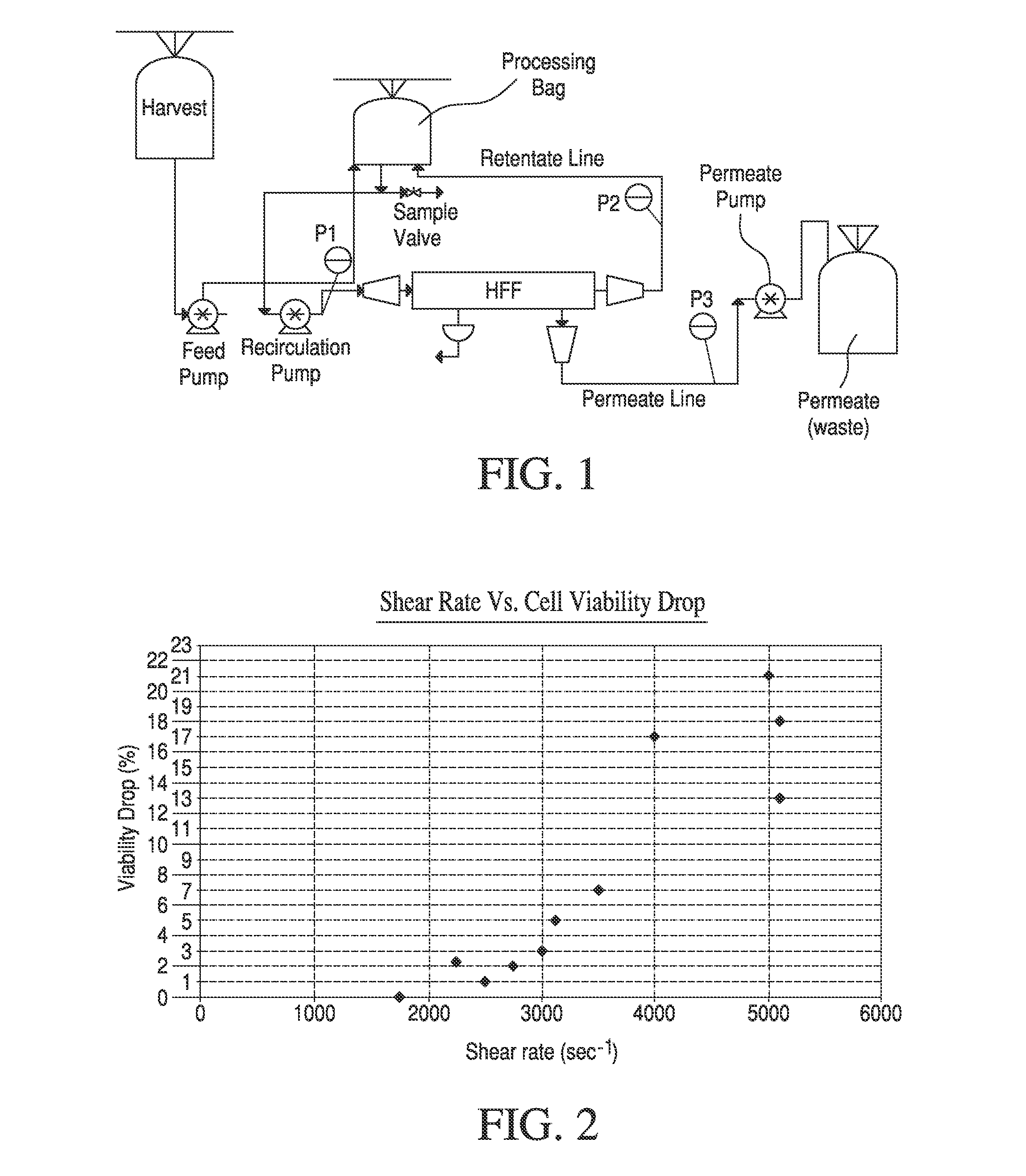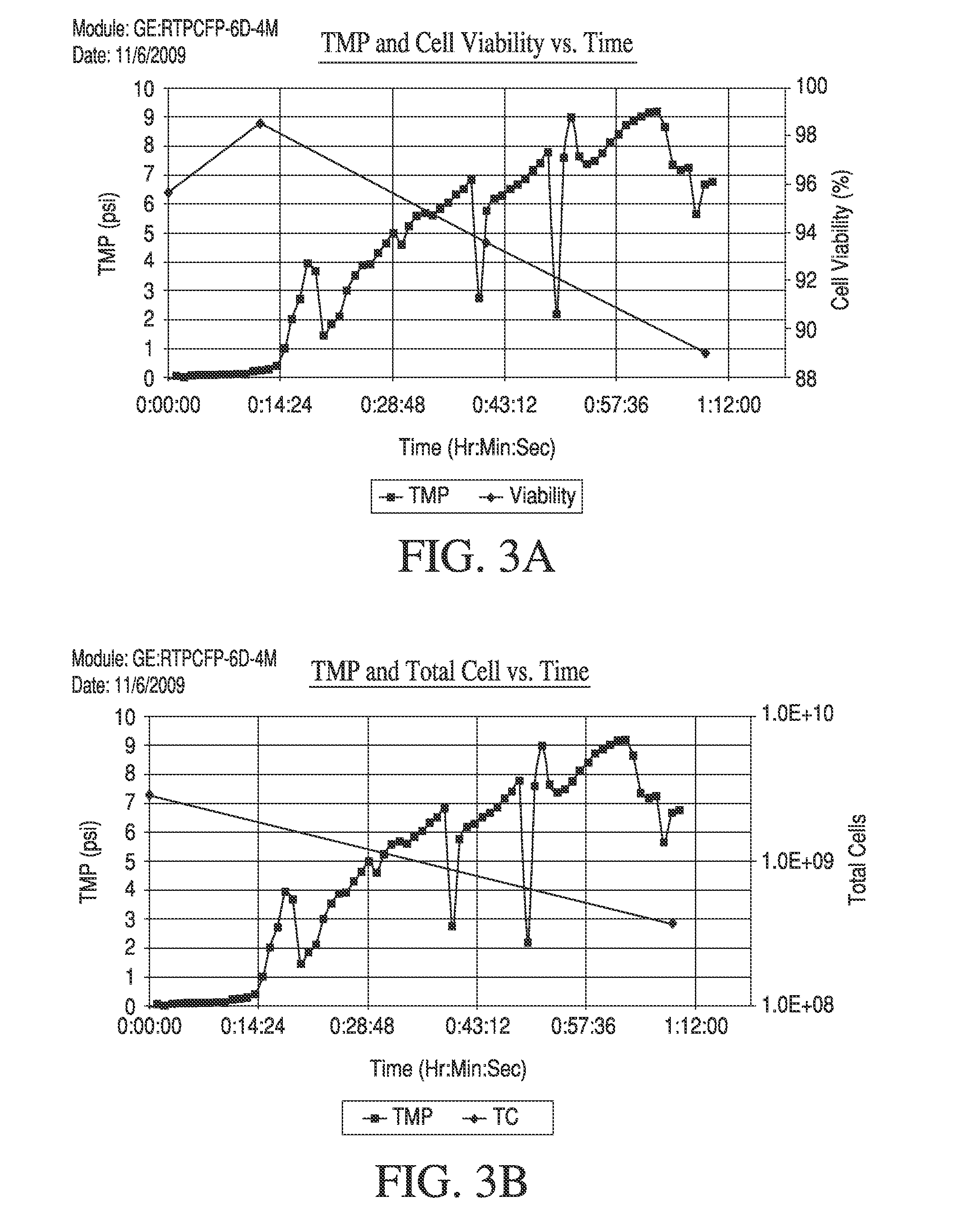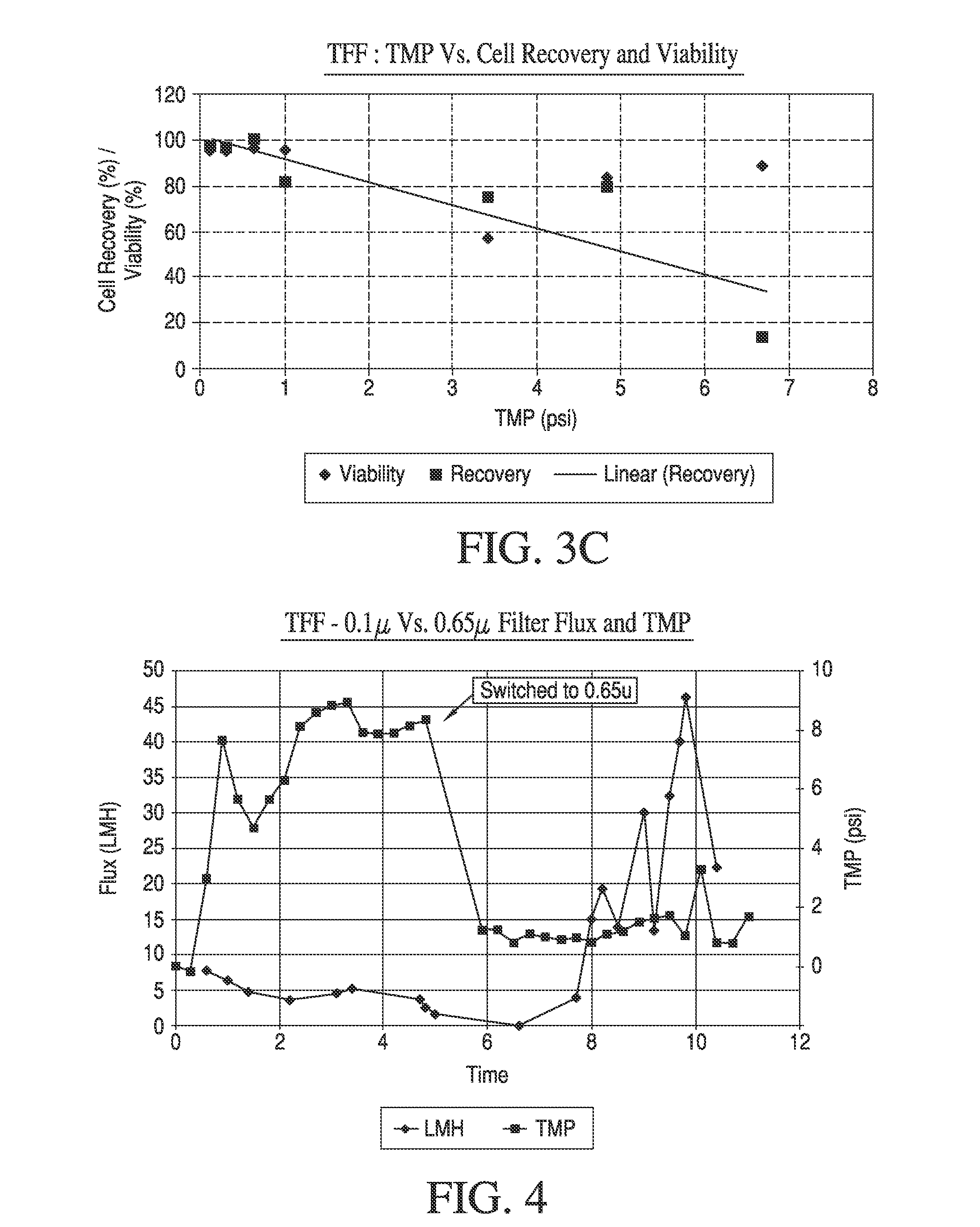High yield method and apparatus for volume reduction and washing of therapeutic cells using tangential flow filtration
a technology of tangential flow filtration and therapeutic cells, which is applied in the direction of biochemical apparatus and processes, artificial cell constructs, biocide, etc., can solve the problems of cell death, therapeutic cells may not survive known processes for handling cells used for protein production, and system scales are not readily scaled for larger preparations, etc., to achieve low cost, minimize filter fouling, and maximize flux
- Summary
- Abstract
- Description
- Claims
- Application Information
AI Technical Summary
Benefits of technology
Problems solved by technology
Method used
Image
Examples
example 1
Effects of Shear Rate
[0062]High shear rates are common in TFF processes as they help to minimize filter fouling (keeping cells from adsorbing onto the filter material), thus maximizing flux and minimizing processing times. The goal of this set of experiments was to optimize the shear rates while maintaining the critical quality parameters of the final cell suspension. Small scale (3-5 L) experimnents were performed according to the typical TFF procedure, above, to investigate the effect of shear rate on TFF process performance and product quality. Shear rate was calculated as
r=4qπR3,
where r is the shear rate (units=sec−1), q is the filter inlet flow rate through the fiber lumen (units=m3 / sec) and R is the fiber radius (in meters). With any given apparatus including specified filters and tubing, shear rate was controlled by the filter inlet flow rate (i.e., flow rate of Feed pump in FIG. 1), Approximately 2-3 billion human dermal fibroblasts were harvested from 2-3 cell factories (40...
example 2
Effect of TMP on the Quality Parameters of Cell Suspensions
[0065]Trans-membrane pressure (TMP) is a critical processing variable for TFF. During processes without permeate control (such as in the '669 patent, above), TMP is the main driving force for permeate flow and controls flux rates. Thus, high TMPs drive high flux rates and low processing times. We therefore set out to determine the effect of TMP on the quality parameters of processed cells using the specified apparatus. For this experiment approximately 2.9 billion human Dermal Fibroblast (hDF) cells were harvested from cell factories (40-Layer Nunc) and processed with a 0.5 ft2 size hollow fiber filter (GE PN:RTPCFP-6-D-4M) at a relatively high shear rate of 3500-3900 sec−1. This high shear rate was chosen to minimize filter fouling while maximizing cell viability. TMP was calculated as
TMP=P1+P22-P3
where P1 is the filter inlet pressure, P2 is the filter outlet pressure and P3 is the permeate pressure. For a given apparatus, ...
example 3
Effect of Pore Size on Flux
[0069]Small scale (3-5 L) experiments were performed to investigate the effect of filter pore size on TFF process performance and product quality. Approximately 3 billion human dermal fibroblasts were harvested from cell factories (40-Layer Nunc) and processed with 0.5 ft2 size hollow fiber filters of 0.65 micron pores (GE PN:RTPCFP-6-D-4M) or 0.1 micron pores (RTPCFP-1-E-4M). The cell concentrations at the beginning of the experiments ranged from 4×105-×105 cells / mL and were concentrated essentially according to the typical process, above. Table 2 below provides range of filter pore size tested and corresponding product quality and process performance parameters.
TABLE 2FilterporeFinal CellFinal CellAverageAveragesizeViabilityRecoveryTMPFluxProcessing(micron)(%)(%)(psi)(LMH)Time (min.)0.1u95N / A*847N / A*0.65u9695128030
[0070]The experiment with the 0.1 micron pore filter could not be completed due to poor permeate flow rate (flux). Thus cell recovery and proc...
PUM
 Login to View More
Login to View More Abstract
Description
Claims
Application Information
 Login to View More
Login to View More - R&D
- Intellectual Property
- Life Sciences
- Materials
- Tech Scout
- Unparalleled Data Quality
- Higher Quality Content
- 60% Fewer Hallucinations
Browse by: Latest US Patents, China's latest patents, Technical Efficacy Thesaurus, Application Domain, Technology Topic, Popular Technical Reports.
© 2025 PatSnap. All rights reserved.Legal|Privacy policy|Modern Slavery Act Transparency Statement|Sitemap|About US| Contact US: help@patsnap.com



